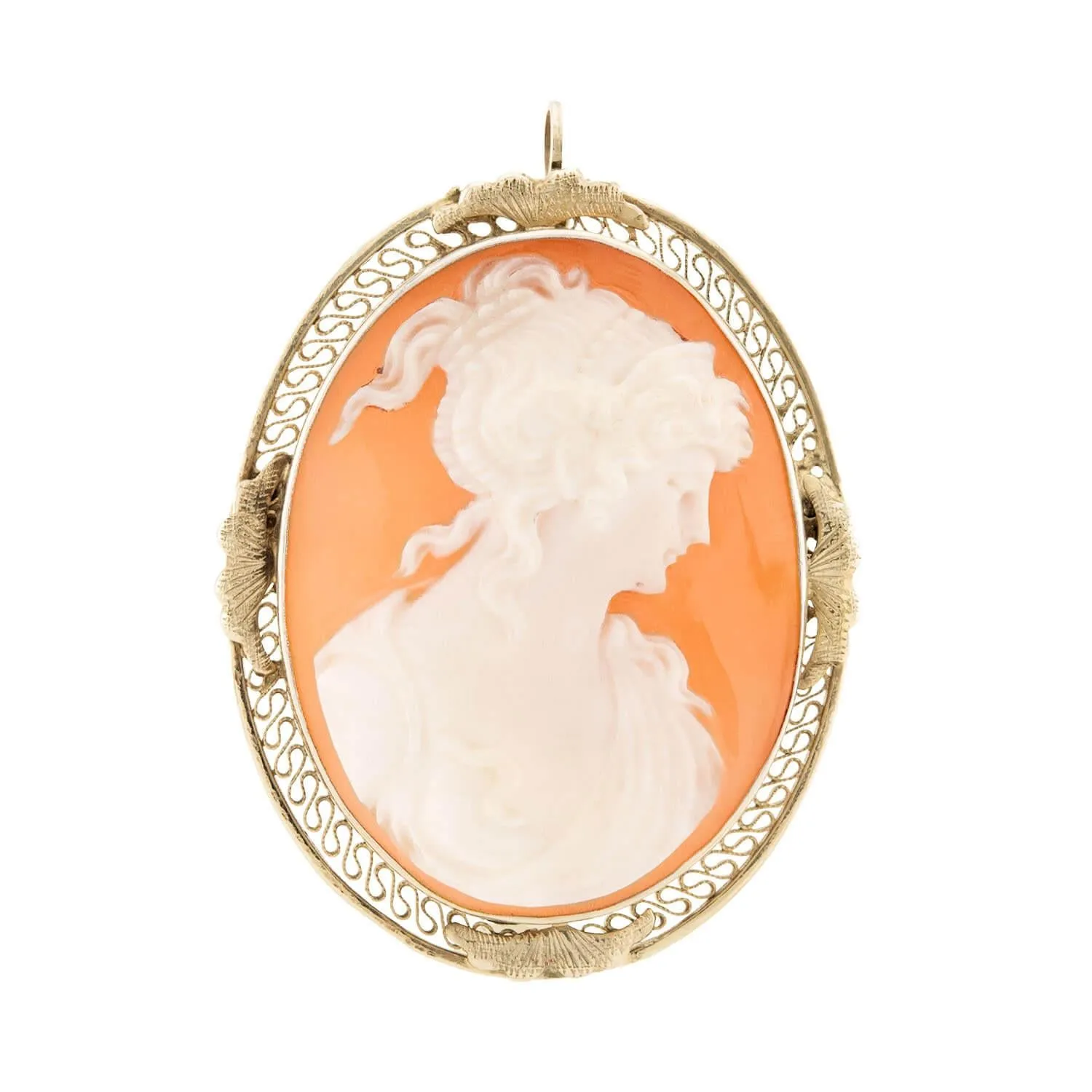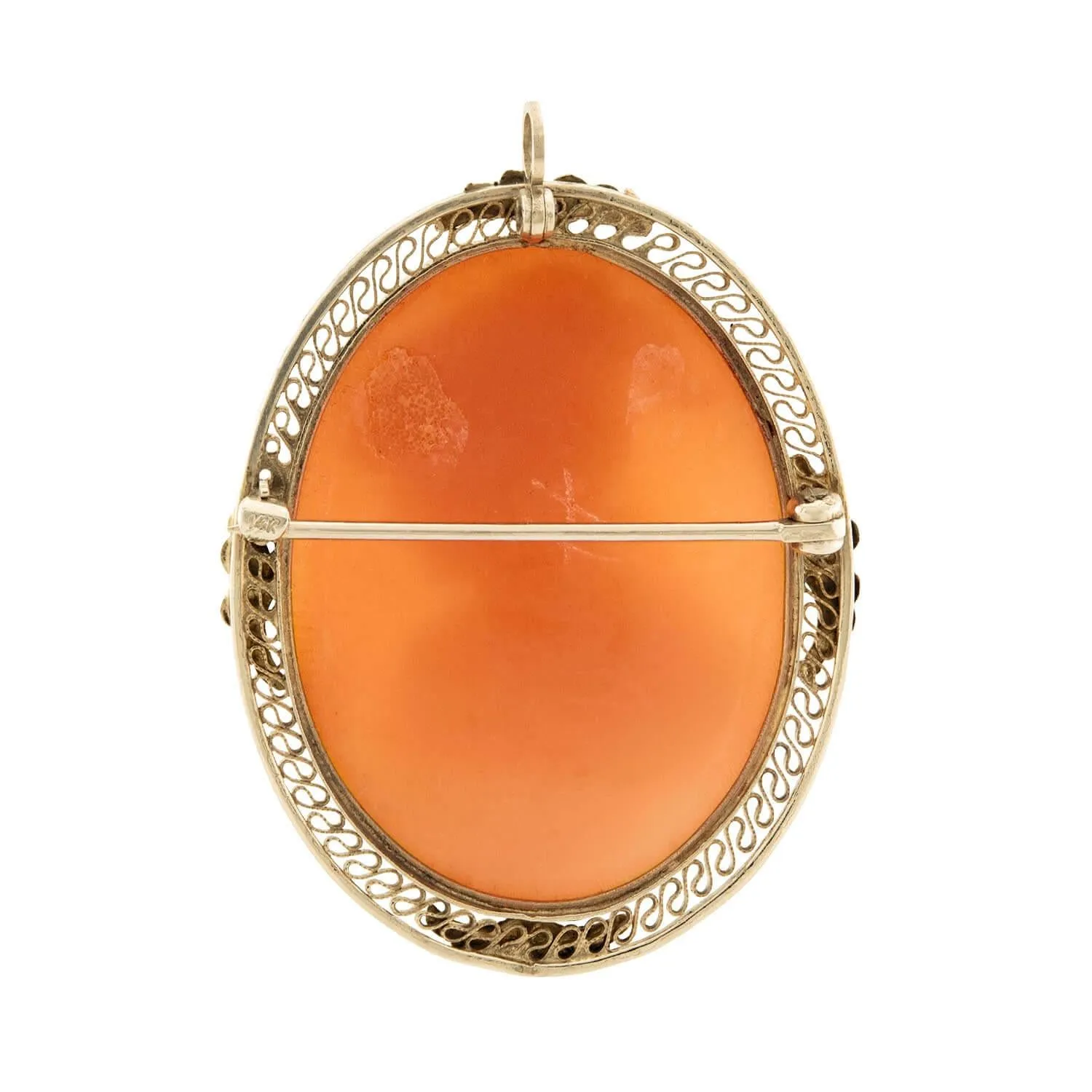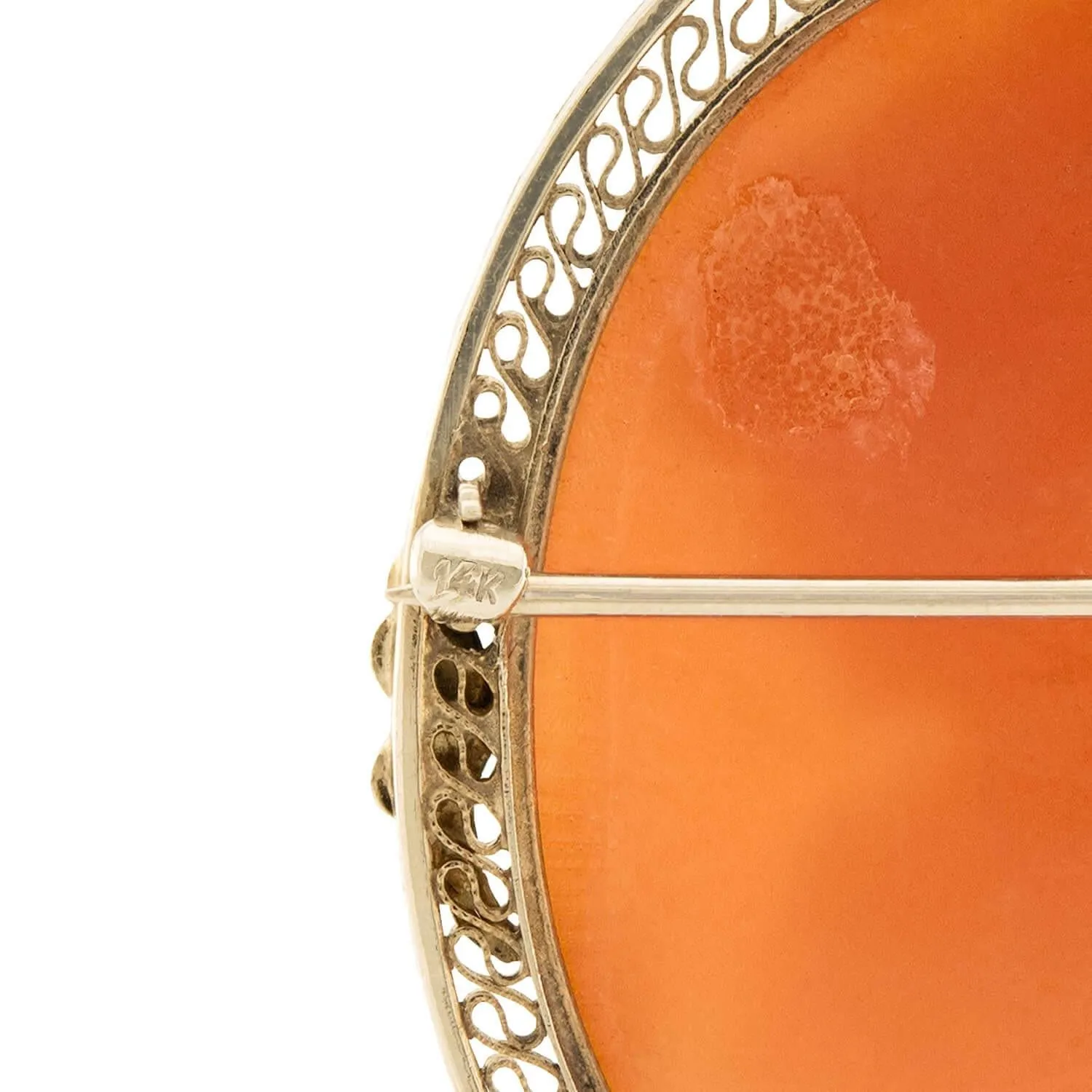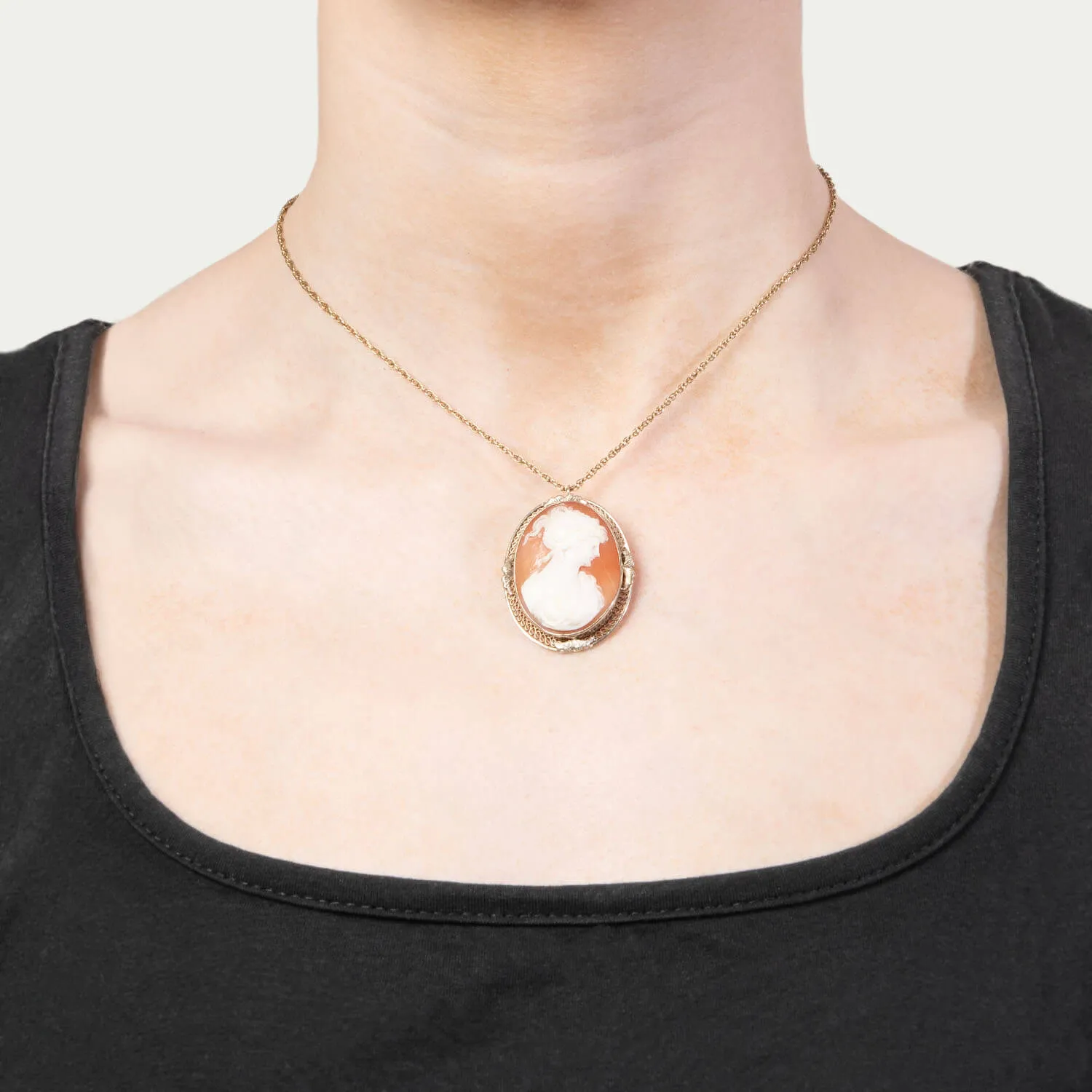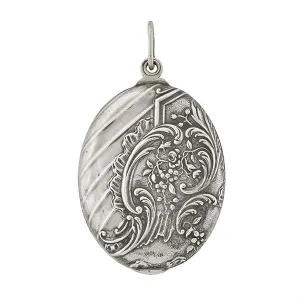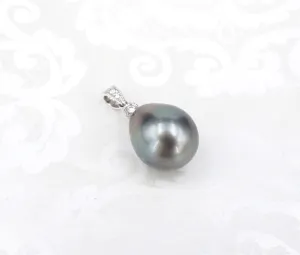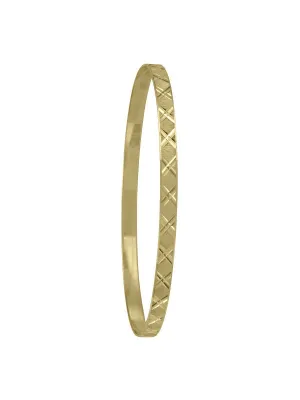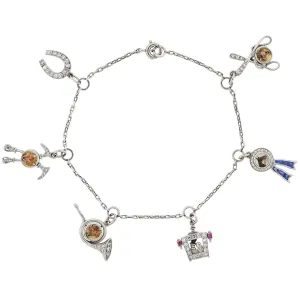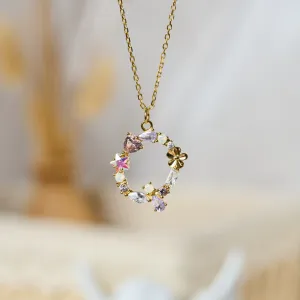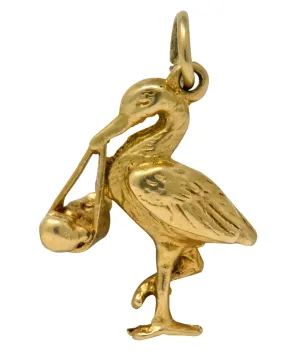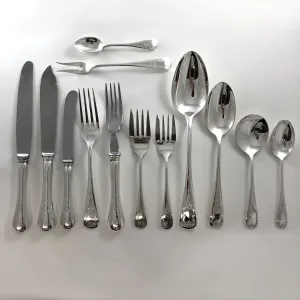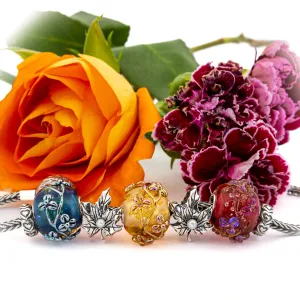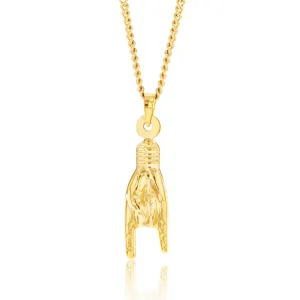Product Details
+
The earliest known use of shell forcameo carvingwas during the 15th and 16th centuries. Before that, cameos were carved from hardstone. The Renaissance cameos are typically white on a grayish background and were carved from the shell of a mussel or cowry. In the mid 18th century, explorations revealed new shell varieties. Helmet shells from the West Indies, and queen conch shells from the Bahamas arrived in Europe, thus sparking a big increase in the number of cameos that were carved from shells.Most commonly, cameos portrayed the faces or images of Romanesque women. Most oftenthey had upswept hairstyles andsome were even adorned with jewelry. The cameos usually depicted the portrait of the "idealized" woman or god's and goddesses from mythology.
This Victorian (ca1880s) cameopin/pendant is hand carved from shell and is simply gorgeous!The largecameois set in an ornate 14k mixed metalframe, which combines a border of small filigree scrolls and four foliageappliqus. The beautiful cameo ishighlydetailed, depicting the profile of a gorgeous woman.The woman's hair is held within a messy updo, and her curls wonderfully frame her face. The woman is dressed in loosed drapery, and her eyes are staring down into the distance. The pin clasp is marked with a "14K" purity mark. This exquisite pin/pendantwould make a lovely addition toany cameo collection!
Measurements:The cameo pin measures approximately 1 2/2" tall, is 1 1/8" wide and 1/4" deep.
Condition:The overall condition of the pin/pendant is excellent. There is no apparent damage to the mixed metal setting or to the carved cameo. The hidden bail and pin clasp are both secure and in working order.




